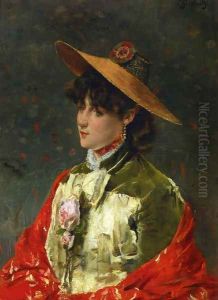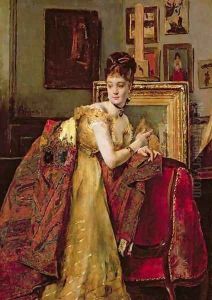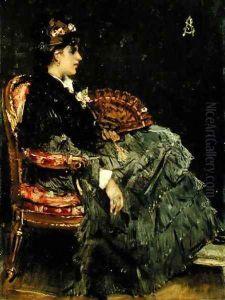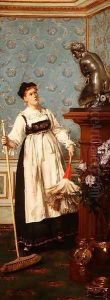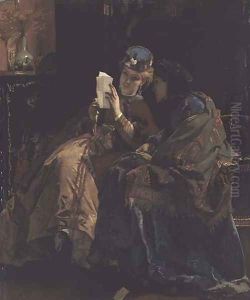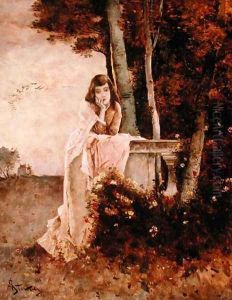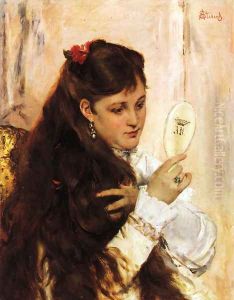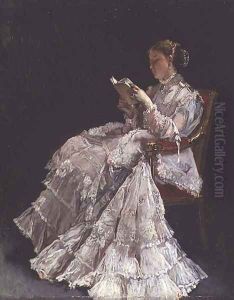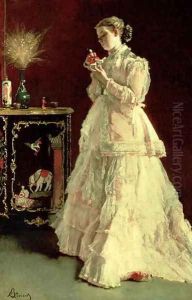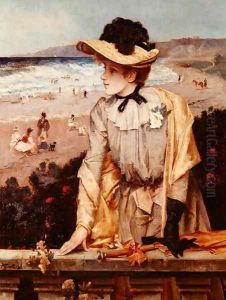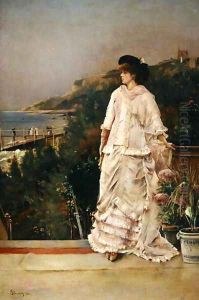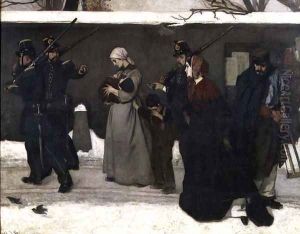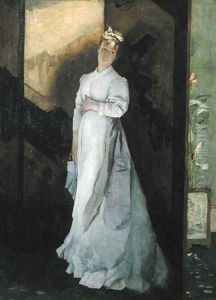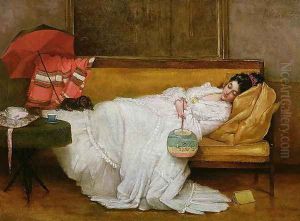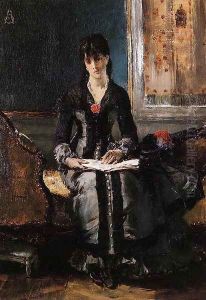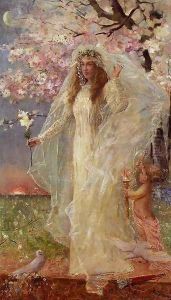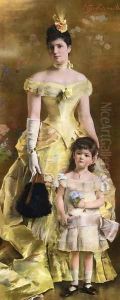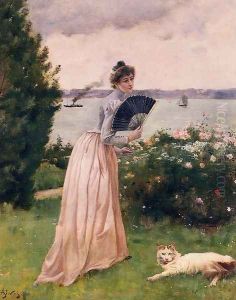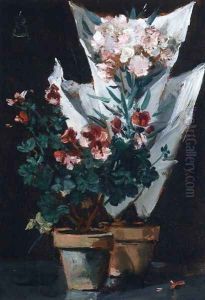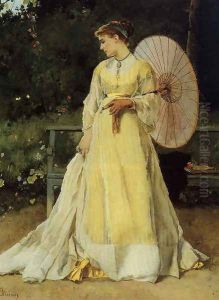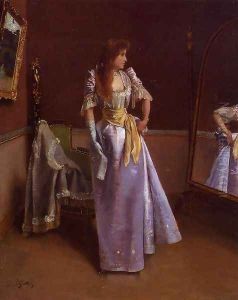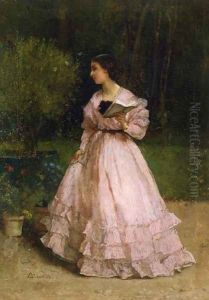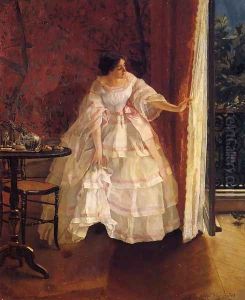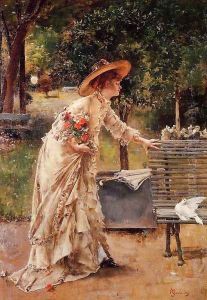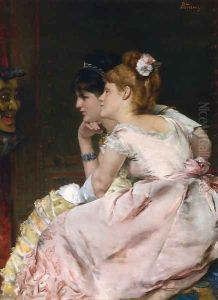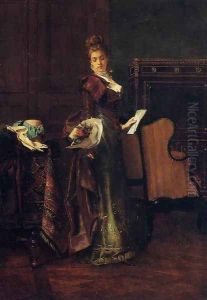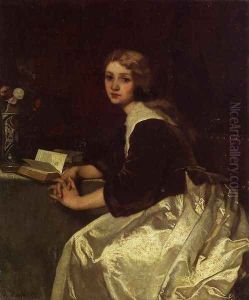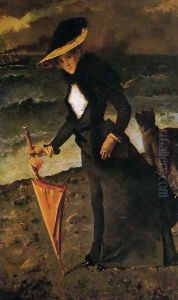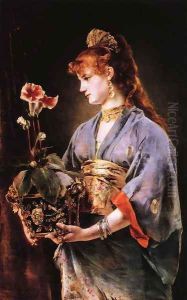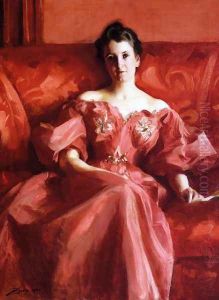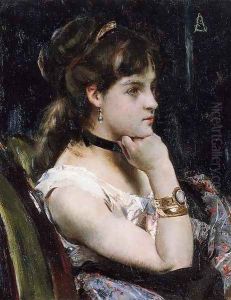Alfred-Emile-Leopole Stevens Paintings
Alfred-Emile-Leopold Stevens was a Belgian painter, known for his elegant depiction of women and genre scenes. Born on May 11, 1823, in Brussels, Belgium, Stevens grew up in an artistic environment; his father was an art collector, and his two brothers also pursued careers in the arts. Stevens studied at the Academie Royale des Beaux-Arts in Brussels before moving to Paris, where he was influenced by the work of French painters like Jean-Auguste-Dominique Ingres and Gustave Courbet.
During the 1850s, Stevens began to gain recognition for his work. He was particularly adept at capturing the nuances of bourgeois life and the subtle interplay of social norms and individual personality. His works often portray women in domestic settings, reflecting on the role and status of women in the 19th century. Stevens' style is characterized by its refined elegance, detailed brushwork, and rich color palette. He was part of the Parisian art scene and was associated with notable artists such as Edouard Manet, whom he befriended.
Stevens' career continued to flourish throughout the Second Empire and into the Third Republic. His paintings were well-received, and he exhibited regularly at the Paris Salon, where he won several medals. His works were also exhibited internationally, including at the Exposition Universelle in Paris.
Aside from genre scenes, Stevens also painted a number of portraits and historical subjects. During the Franco-Prussian War, he served as a captain of the National Guard, an experience that influenced some of his later work.
Stevens was honored with the Legion of Honour in 1863 and was promoted to officer of the order in 1878. His influence extended beyond his lifetime, as he was known to advise younger artists, including the Impressionists.
Alfred-Emile-Leopold Stevens passed away on August 29, 1906, in Paris. His legacy includes a body of work that provides valuable insight into the society and culture of his time, and he remains an important figure in the history of 19th-century European art.

